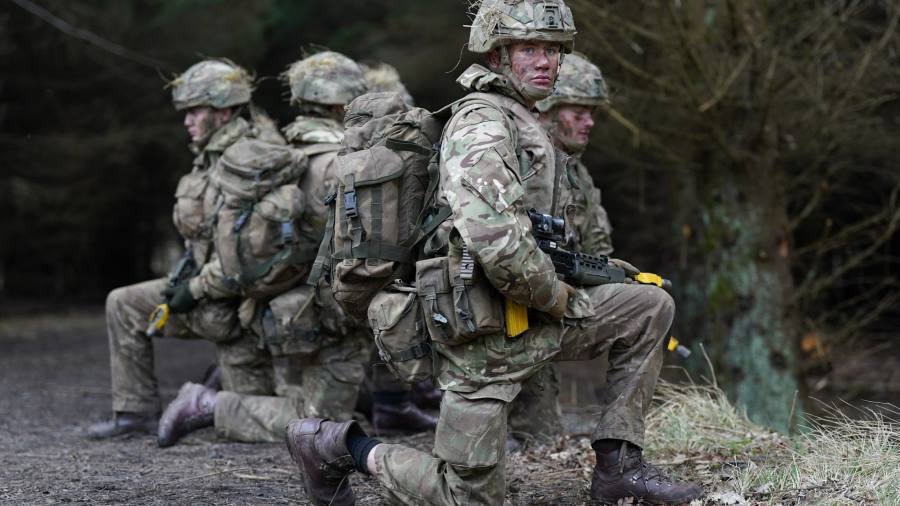Receive free UK defence spending updates
We’ll send you a myFT Daily Digest email rounding up the latest UK defence spending news every morning.
The writer is a former US naval officer and senior adviser at the Atlantic Council think-tank
Is Britain a formidable military power today? Sadly, no. Even though the UK would only enter a conflict with partners, its conventional forces are now critically underpowered. Indeed, the total number of active duty personnel — about 150,000 — is smaller than the US Marine Corps.
Last month’s UK Defence Command Paper, which sets out a strategy for meeting current and future threats, does not help. It offers no viable vision or strategic plan to reverse this condition. The paper relies heavily on repeating concepts from the US National Defense Strategy rather than setting a course demanded by today’s realities. More radical thinking is needed.
Ben Wallace, Britain’s outgoing defence secretary, has promised the country will spend at least £100bn a year on its military by 2030; about double what it spends today. But given inflation, the purchasing power of this sum will have withered in seven years’ time.
The Command Paper’s key weakness is that it reverses ends and means. Its first four chapters relate to people, technology and how the Ministry of Defence will become a “campaigning department”. The vision for transformation follows. But change should lead the report, not the reverse. And change is desperately needed given the challenges posed by China, Russia and a budget that is too small for supporting the forces.
Like many military strategy documents, the paper is written in jargon rather than substance. The concept of “integrated” deterrence, a slogan taken directly from the US lexicon, is ill-defined. The concepts of “campaigning and global competition” are not put in terms that can be made operational.
Back in 1971, I ended my tour in the Royal Navy after two years serving as an American exchange officer. The RN was a formidable force. It mustered three aircraft carriers, 81 destroyers and frigates; 39 diesel and nuclear submarines; and about 250 Phantom fighters and Buccaneer strike aircraft.
Today, that Navy has shrunk to two carriers; 18 destroyers and frigates; two landing platform dock ships; six nuclear attack and four Vanguard submarines. By 2025, there should be 48 F-35B Lightning II fighter jets, although this programme has been beset by delays. The army will be cut to 72,500, with only 148 tanks.
When challenged by a parliamentary select committee last month on whether the army would ever be able to deploy its warfighting third division, the chief of the defence staff Admiral Sir Tony Radakin hedged. “We recognise that we need to strengthen that division,” Radakin told MPs on the defence select committee. “That is what is in existence now, and we will strengthen it even further.” Translated into plain English, the third division is not ready for war. Even Vladimir Putin’s invasion of Ukraine does not appear to have provoked the urgency this issue requires.
The British military’s ability to deter conflict and defend the nation depends on its ability to make any enemy attack too costly to consider in the first place. Even with a force of 150,000 that is possible.
Disruption can be achieved by using kinetic (firepower and manoeuvre) and non-kinetic means (cyber, electronic warfare, disinformation, deception and misinformation) aimed at command and control and decapitation of enemy leadership. That also means achieving rapidly deployable “expeditionary” capability whether for Nato or elsewhere.
This requires profound restructuring, but the technologies are available. Ukraine has shown how cheap civilian kit such as drones and the use of civilian satellites can be repurposed for potent military use. Without change, more of the same means less of the same — and Britain’s military will cease to count for much.
Read the full article here



